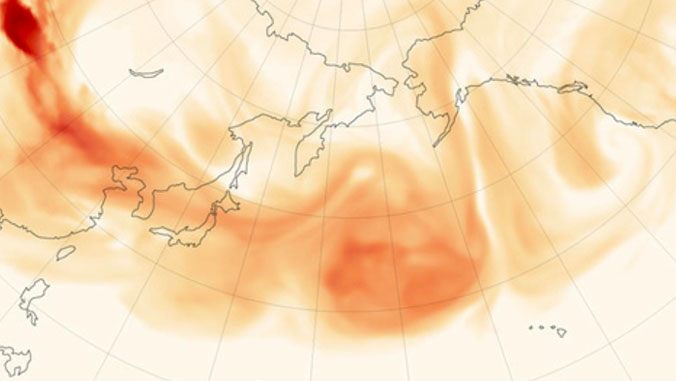
The vast subtropical “gyres”—large systems of rotating currents in the middle of the oceans—cover 40 percent of the Earth’s surface and have long been considered biological deserts with stratified waters that contain very few nutrients to sustain life. These regions also are thought to be remarkably stable, yet scientists have observed the region’s chemistry changes periodically, especially levels of phosphorus and iron, affecting the overall nutrient composition and ultimately its biological productivity.
In a new study published in Proceedings of the National Academy of Sciences, researchers from the University of Hawaiʻi at Mānoa, Oregon State University (OSU) and elsewhere, documented what induces these variations: changes in the amount of iron that is deposited into the ocean via dust from Asia.
The study, led by Ricardo Letelier at OSU and David Karl with the UH Mānoa Center for Microbial Oceanography: Research and Education at the School of Ocean and Earth Science and Technology (SOEST), used three decades of observation data from the Hawaiʻi Ocean Time-series program, which is based at UH Mānoa and funded by the National Science Foundation.
“We now know that these areas that were thought to be barren and stable are actually quite dynamic,” said Letelier. “Since these areas cover so much of the Earth’s surface, we need to know more about how they work in order to better predict how the system will respond to climate variations in the future.”
Key nutrients support life
Both phosphorus and iron are key components for life, and the researchers noticed that the levels of those nutrients in North Pacific gyre surface waters changed significantly during the three decades of the study.
The team was able to relate these changes to the iron input from Asian dust—a combination of the desertification of that continent, with combustion, especially wildfires and factory output, and the wind patterns across the North Pacific Ocean—that accounted for the variance and provided varying amounts of nutrients to sustain life.
In addition to Karl, UH Mānoa researchers Karin Bjorkman, Niklas Schneider and Angelicque White are co-authors on this study.
See the full story on the SOEST website.
—Based on a press release from Oregon State University.

